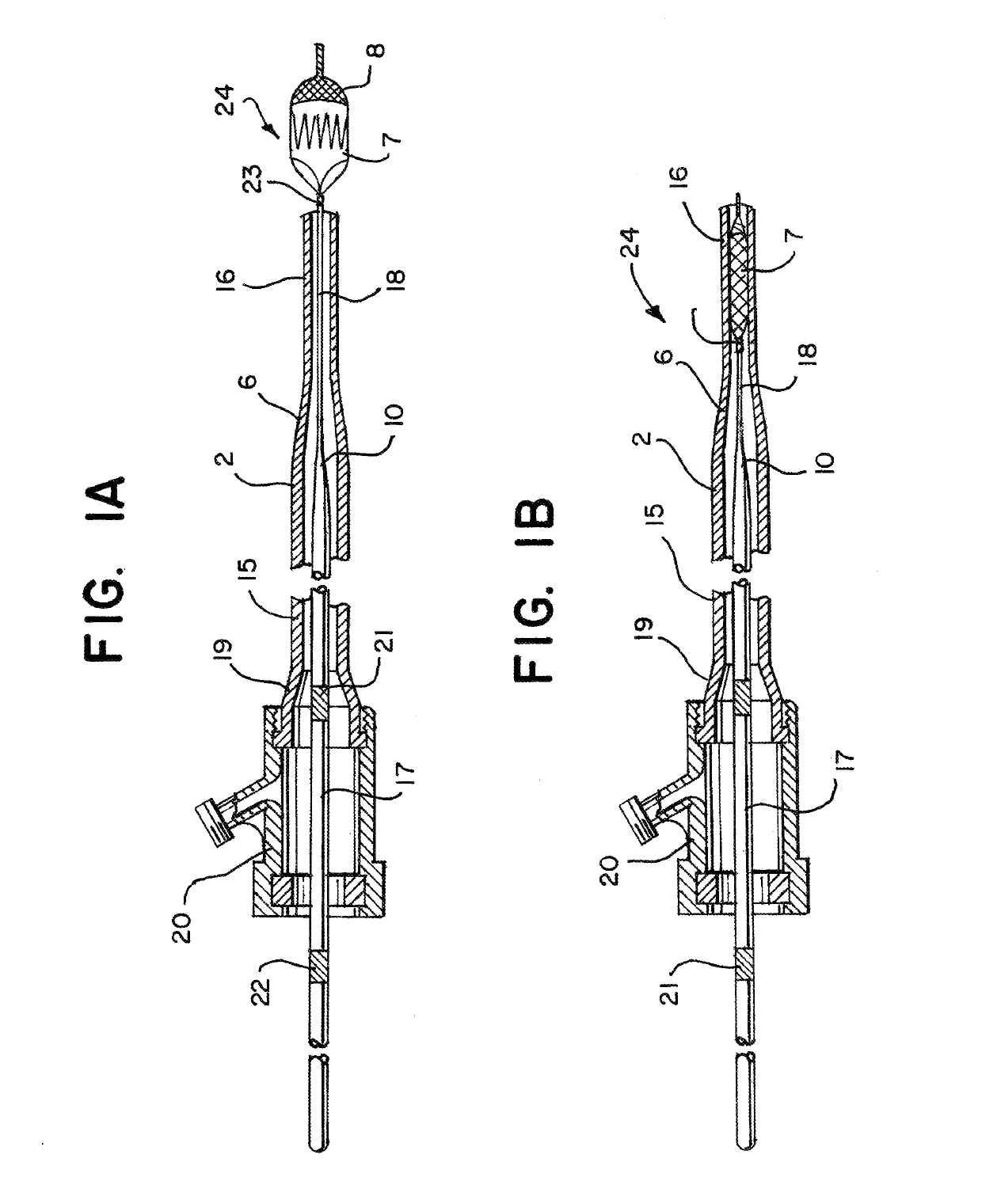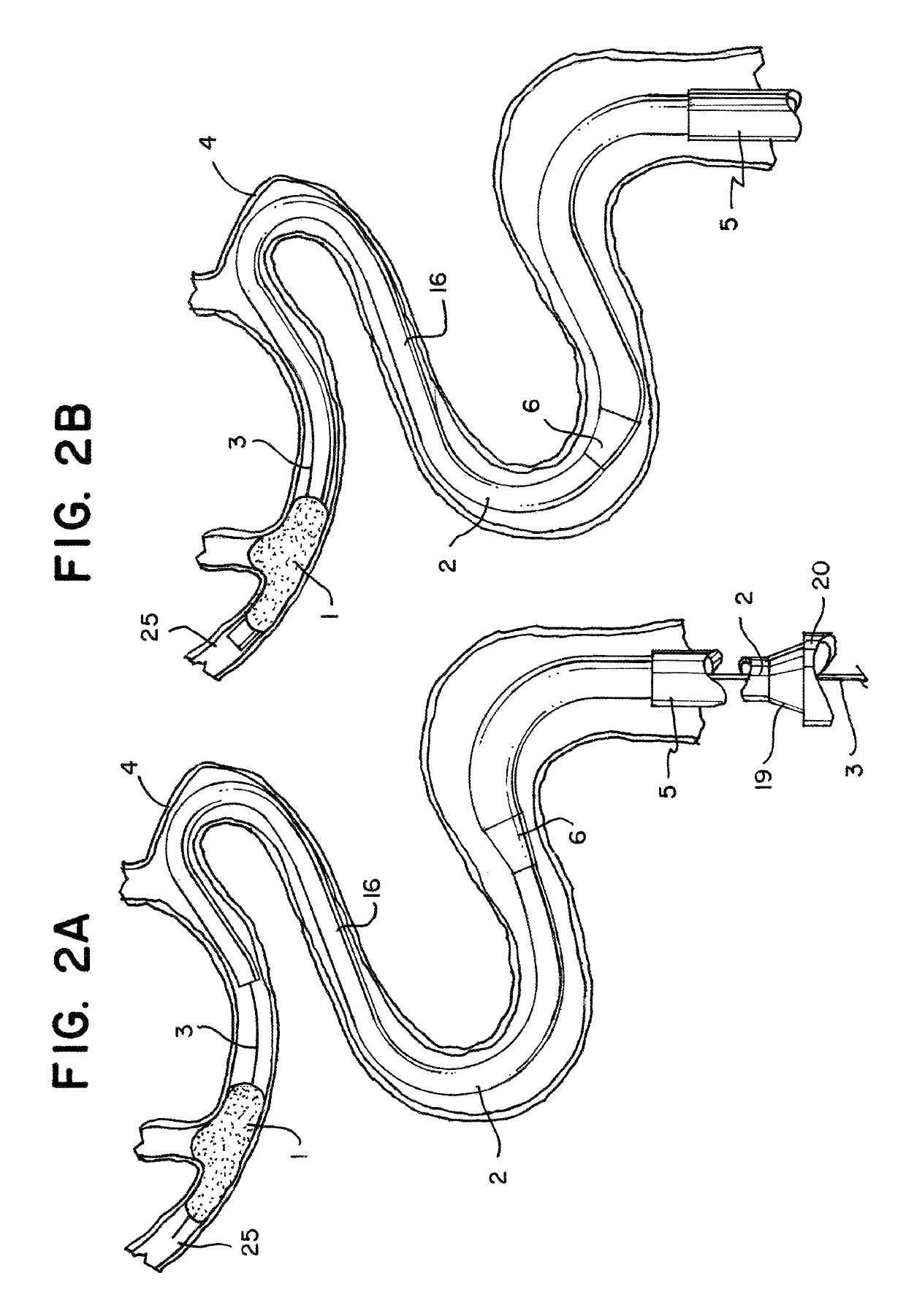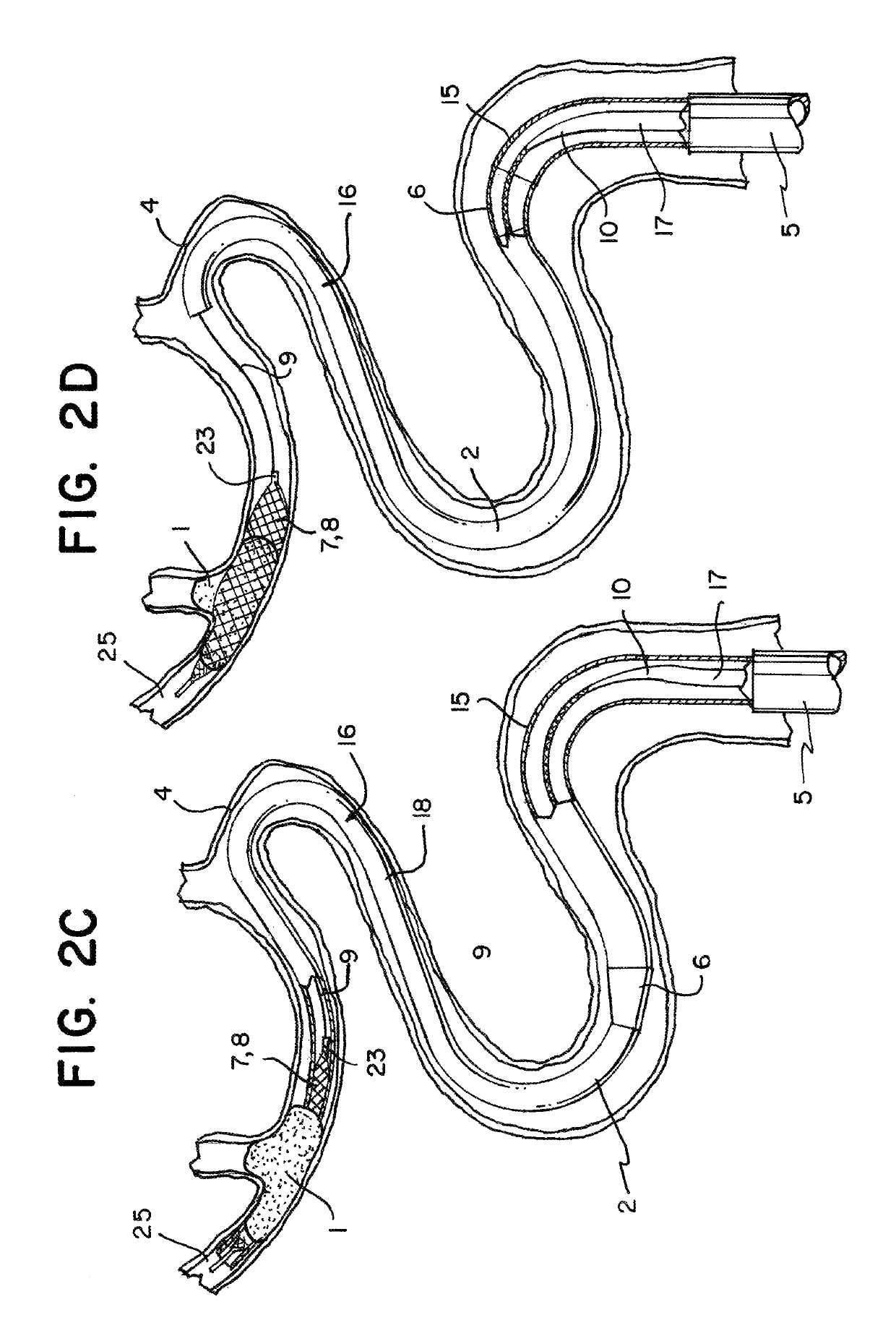System for removing a clot from a blood vessel
a technology a blood vessel, applied in the field of systems for removing a clot from a blood vessel, can solve the problems of limited therapy options, difficulty in mechanical thrombectomy and/or revascularisation devices, and acute ischemic strok
- Summary
- Abstract
- Description
- Claims
- Application Information
AI Technical Summary
Benefits of technology
Problems solved by technology
Method used
Image
Examples
Embodiment Construction
[0035]Referring to FIGS. 1a and 1b of the drawings there is illustrated a system 24 for removing obstructions such as clot from a blood vessel, the system comprising a clot retrieval device 8 having a clot retrieval element 7 mounted at the distal end of an elongate shaft 9 and a catheter 2 which in this case is a microcatheter which is used to deliver the clot retrieval element 7 in a collapsed delivery configuration across a clot. The clot retrieval element 7 is deployed from the catheter 2 into an expanded deployed configuration for clot retrieval. FIG. 1a shows the system with the clot retrieval element 7 in the deployed expanded condition. FIG. 1b shows the system with the clot retrieval element 7 collapsed within the distal portion 16 of the microcatheter 2, just prior to deployment.
[0036]The catheter 2 comprises a catheter proximal section 15, a catheter distal section 16, and a catheter intermediate section 6 between the proximal and distal section. The catheter distal secti...
PUM
 Login to View More
Login to View More Abstract
Description
Claims
Application Information
 Login to View More
Login to View More - R&D
- Intellectual Property
- Life Sciences
- Materials
- Tech Scout
- Unparalleled Data Quality
- Higher Quality Content
- 60% Fewer Hallucinations
Browse by: Latest US Patents, China's latest patents, Technical Efficacy Thesaurus, Application Domain, Technology Topic, Popular Technical Reports.
© 2025 PatSnap. All rights reserved.Legal|Privacy policy|Modern Slavery Act Transparency Statement|Sitemap|About US| Contact US: help@patsnap.com



